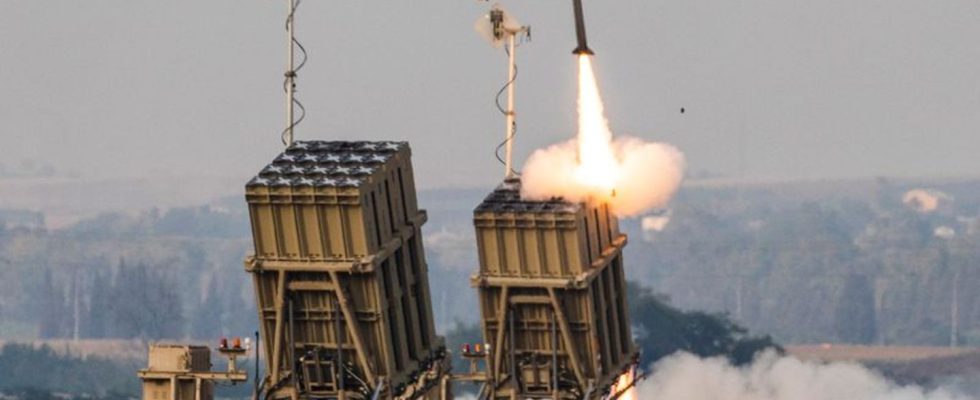From the Iron Dome to the sky
This is how Israel protects itself against air strikes
The Iron Dome missile defense system fires an interceptor missile. photo
© Ilia Yefimovich/dpa
Iran sent hundreds of missiles and combat drones to Israel over the weekend. The fact that this attack ended relatively lightly is due to a sophisticated defense system.
The Israeli air defense system repeatedly intercepts missile and drone attacks. The more than 300 projectiles that the Iran’s fires over the weekend tested the country’s defenses. According to the Israeli military, almost all attacks were repelled. This is made possible by a complex air defense system that works at multiple ranges:
An iron dome protects Israel at a short distance
The Israeli-developed Iron Dome operates nearby. The defense system is specialized in intercepting rockets and projectiles over short distances. A battery can protect a circular area with a radius of about seven kilometers.
The area corresponds roughly to a city like Freiburg. The USA has so far supported construction, development and maintenance with more than three billion dollars – the Iron Dome is therefore considered a symbol of the USA’s role as Israel’s protective power.
According to Israel, the system has been used several thousand times since it was launched in 2011. It is mobile and can be moved within a few hours. A radar device detects threatening projectiles such as mortar shells and short-range rockets.
The data is passed on to a rocket launcher, which launches an interceptor missile with a range of up to 70 kilometers. According to the International Institute for Strategic Studies’ annual report “Military Balance 2023,” Iron Dome has a success rate of over 90 percent.
David’s sling is aimed at larger attackers
The David’s Sling, also developed with the USA, goes a step further in defending Israel. Ready for use since spring 2017, the system, also known as the Magic Wand, is used to neutralize larger ballistic and cruise missiles with a range of up to 300 kilometers compared to the Iron Dome. According to US information, Iran, Syria and Hezbollah in Lebanon have such weapons.
According to the information, the range of the Stunner interceptor missiles used for defense is around 25 kilometers. One launcher can hold up to 16 such missiles. Two batteries are therefore enough to cover the area of Israel. According to its own information, the USA has invested around 2.4 billion US dollars in the development.
The Evolution of the Arrow System: High-Level Protection
In order to protect itself against threats from far away, Israel and the USA designed the Arrow defense system in 1986. It aims to intercept medium to long-range missiles. The focus is on defending against missiles flying outside the Earth’s atmosphere. The system was developed in collaboration with Boeing and the Israeli aerospace group IAI. The US has supported Arrow with a total of more than $4.5 billion.
Israel is now using “Arrow 2” and “Arrow 3” missiles. According to the manufacturer, “Arrow 3” can fire interceptor missiles at high altitudes of up to 100 kilometers and has a range of up to 2,400 kilometers. No exploding substances are used, but targets are destroyed through a direct impact – a so-called hit-to-kill – which is intended to minimize the risk of debris damage.
From the beginning of anti-aircraft defenses to high-energy lasers
Israel has been building and continuously developing air defense since the 1960s – starting with the Hawk and followed by the Patriot system, which has been in use since 1991. Innovations such as the 2021 improved Iron Dome and the development of the more advanced “Arrow 4” demonstrate Israel’s commitment to constantly updating its defenses.
About two years ago, Israel introduced the Iron Beam. According to US information, the cost-effective laser system can neutralize targets such as drones for around four dollars per use. According to the manufacturer, the laser defense weapon, which is still being tested by the military, should be ready for use from 2025.

